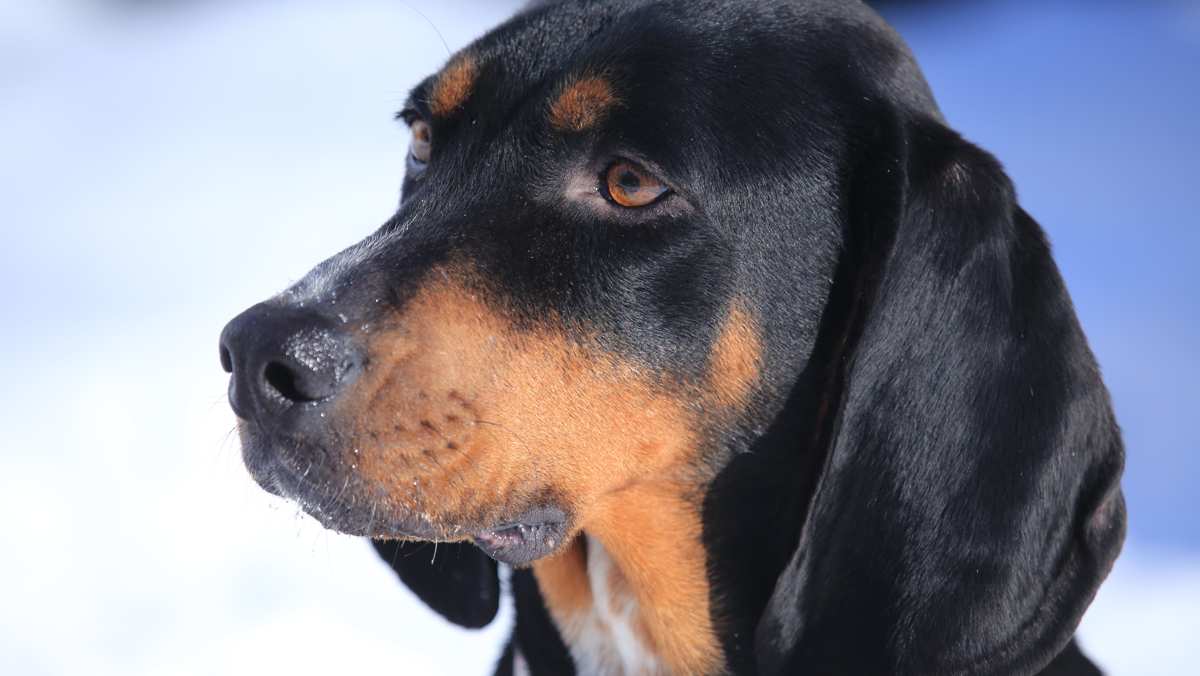It's a new breed, but Black and Tan Coonhound history essentially goes back several centuries via the Talbot Hound up through the Bloodhound, the Fox Hound, and the Black and Tan Virginia Foxhound. This is one of the six Coonhounds formally recognized by the American Kennel Club (AKC). While the thought of hunting raccoons may seem odd to many Americans, this game long provided food, fur, and fat to early American settlers, and having a good dog to help catch them was key to survival.
As there was no dog that could tree and retrieve raccoons when America was in its infancy, Fox Hounds were used and then crossed with other dogs as the newly minted Americans sought a top dog for the job. Unlike Fox Hounds, who were accustomed to gentle rolling hills and other relatively easy terrain during the day, the Black and Tan Coonhound was bred to endure the swamps, thorns, and dangers of night hunts trailing raccoons.
The mountains of Kentucky was where the all-American B&T was developed, and the two primary dogs used to produce this breed were the Black and Tan Virginia Foxhound and the Bloodhound. Unlike the Bloodhound, who tends to meander as she follows a scent, the B&T Coonhound moves much faster, and they are keen to chase all sorts of animals up too and including bears.
The United Kennel Club added the dogs to its books in 1900, a move which made the B&T Coonhound the first coonhound to be registered. When the breed was first admitted to the UKC registry, it was called the American Black & Tan Fox and Coonhound, until it was shortened to American Black and Tan Coonhound. It took nearly half a century, however, for the United States to recognize one of its own homegrown dog breeds. In 1945, the B&T became the first Coonhound breed registered by the AKC.

